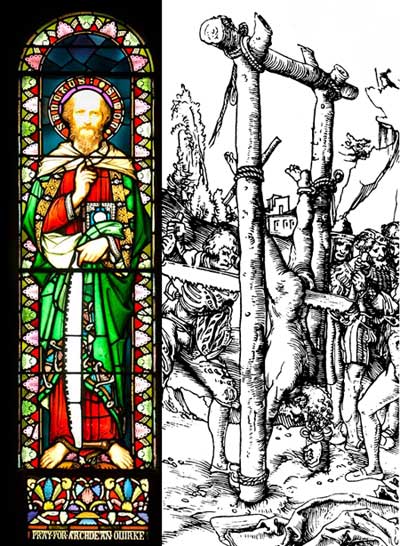Ireland’s National Heritage Week 2019 ended yesterday August 24th.

“And ye shall be hated of all men for my name’s sake”, Matthew Ch.10 – v. 22
A depiction of Saint Simon the Zealot (Matthew Chapter 10 – Verse 4), also referred to as Simon the Cananite or Simon the Cananaean; can be viewed in a stained-glass window in the Cathedral of the Assumption, Cathedral Street, here in Thurles, Co. Tipperary. This same window designed and manufactured by Franz Mayer & Co. of Munich, Germany, can be found to the left-hand side, behind the Cathedral tabernacle, as you face due north.
A brother of James the Great and St. Jude Thaddeus; St. Simon was one of the Twelve Apostles to whom Jesus Christ first gave authority to drive out impure spirits and to heal every disease and sickness.
He is almost always portrayed with a large, serrated edged saw, better known here in Ireland possibly as a ‘cross-cut saw’, same designed to be operated by two persons.
It was with this same implement that St. Simon was eventually martyred around 65AD, possibly in Persia (Iran), for his beliefs. His body was first buried in Babylon, a city in ancient Mesopotamia, in the fertile plain between the Tigris and Euphrates rivers. However, in the 7th century he was brought to Rome, possibly after the Mohammedan’s seized Persia.
Death by sawing was a method of execution, reportedly used in different parts of the world. It was used extensively during the reign of Roman Emperor Caligula from 37AD to 41AD. It was said that the same emperor would watch such executions during meal times, claiming that such viewing acted as an appetiser.
It is believed that St. Simon was hung up naked by his feet, as shown in the illustration above, thus ensuring that he stayed alive considerably longer than if he had been cut in half from the head downwards. A man could stay awake during this upside-down torture; conserving blood loss to his brain, until a saw blade had cut at least to his waist.

Leave a Reply